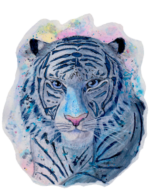Siegfried Sassoon’s poem, ‘In Me, Past, Present, Future Meet’ is noteworthy for a number of reasons, not just for the poem and the possible interpretations of it, but also for the poet behind the poem. Sassoon was a complex human being (like many of us) and this may be why this poem strikes a chord, as it helps us to understand the complexity of decision-making.

In me, past, present, future meet
~Siegfried Sassoon
To hold long chiding conference.
My lusts usurp the present tense
And strangle Reason in his seat.
My loves leap through the future’s fence
To dance with dream-enfranchised feet.
In me the cave-man clasps the seer,
And garlanded Apollo goes
Chanting to Abraham’s deaf ear.
In me the tiger sniffs the rose.
Look in my heart, kind friends, and tremble,
Since there your elements assemble.
Sassoon was faced with challenging choices and decisions which were further complicated by his experiences in the war. A deeper appreciation of Sassoon’s poetry can be gained from learning about the poet himself.
A review of Sassoon’s history shows that while he joined the war effort as an act of patriotism, after witnessing some of the dark realities of the First World War, he became opposed to the war (Biography Online). As a soldier, it was his duty to carry out orders, yet he disagreed with the vehicle of war itself. Sassoon was well known for his poems which often heavily critiqued the war (Poetry Foundation). His critique of the war was fueled by his experiences in the war.
Sassoon’s military career began when he was commissioned into the Royal Welsh Fusiliers in May 1915 and subsequently was awarded two military decorations for his service in the war. Sassoon believed that the government was deliberately extending the war and this was publicly expressed in a letter published in the Times in June 1917. Sassoon was believed to be shell-shocked (BBC). Indeed, Sassoon undoubtedly saw and experienced many traumatic events during the time he served in the war.
Sassoon was nicked-named “Mad Jack,” as he appeared to be fearless when it came to actions he undertook during the war. For example, Sassoon killed 50 Germans in a trench, along the Hindenburg line, completely on his own. Sassoon never reported this incident to his superiors and it was said that his actions were driven by his depression and his negative views of the war (Biography Online). Even though many of Sassoon’s poems were written in harsh criticism of war, his poem, ‘In me, past, present, future meet,’ has an inspirational side to it, for the following reasons.
Firstly, the poem speaks to how human beings make decisions, based on knowledge gained throughout life. Our “past, present and future” intersect and influence our decisions as we contemplate past events, current events and what may come to be. This often causes us take pause as we consider our options, as the past is over and the future has yet to begin. We have to sift through bits of knowledge that are derived from different times in our lives and decide which pieces hold valid in our lives now.
Secondly, the poem shows how reason and desire are in a constant match with one another in our decision-making. There is an ongoing dance between our desires (“lusts”) and what we deem to be reasonable (“reason”), which is often based on past events in our lives. Sometimes our desires override (“loves leaps”) what appears to be reasonable, as we see the potential freedom in the future endeavours we strive for. On the other hand, reason can keep us from engaging in behaviours which may cause harm to ourselves or others.
Thirdly, the poem shows how our personality and character are multifaceted, which influences our decisions. Aspects of our character and personality (i.e. Caveman/Seer, Apollo/Abraham, Tiger/Rose) often vie with each other, because our character and personality are formed from a variety of biological and environmental factors. These factors sometimes come to form a series of character and personality contradictions (“elements”). It is unsurprising when people find themselves riddled with indecision because an innate part of themselves wishes to do one thing, while the part that has acquired knowledge (no matter how false), believes they should do another.
Finally, the poem shows how interesting and unique humans really are. As long as there is diversity in one’s character and personality, one truly cannot be labelled or classified. We have to decide which aspects of ourselves hold more weight at any given time and make a decision based on that. For example, being a kind volunteer when attending to senior citizens or being a directive and assertive police officer during a riot, may be appropriate behaviours to enact for the given circumstances. However, we do not always make the right call and this poem points out that challenge.
Perhaps striking a balance, while walking in contradiction, is where the possibilities lie. Finding equilibrium, disables the possibility of being put in a box and increases our sense of agency. It is sometimes worthwhile to take risks, even if it does not seem reasonable. Sometimes we make good decisions and sometimes we do not. Accepting that we are unique individuals who sometimes make the wrong decisions, will help us to move forward and take corrective action, rather than beating ourselves up. We have the ability to pick ourselves up and dust ourselves off. If we understand this, our worlds open up and options become more plentiful.


